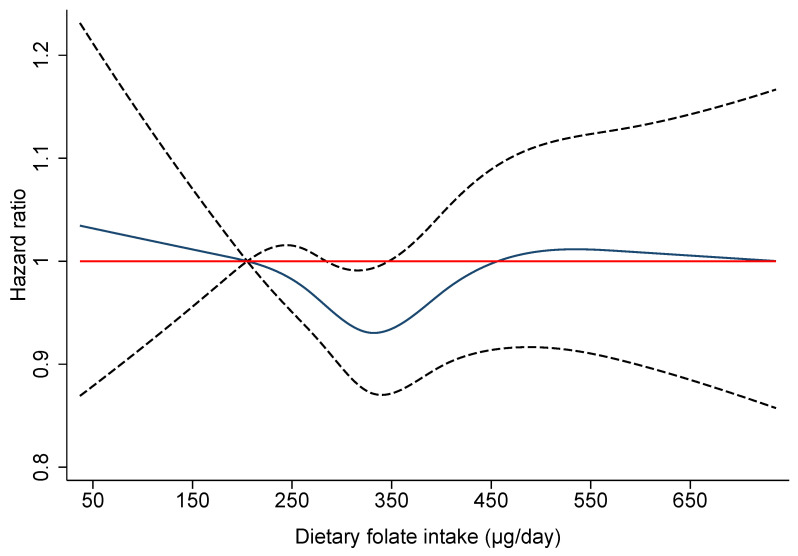Figure 2.
Non-linear relationship between dietary folate intake and breast cancer risk (solid line: hazard ratio; dotted line: 95% confidence intervals) among 318,686 women in the EPIC cohort, obtained by using five-knots cubic splines with the median of the first quintile as a reference value (205 µg/day). The model was stratified by study center and one year categories of age at recruitment and adjusted for total energy intake (kcal/day), alcohol intake (g/day), dietary fiber intake (g/day), height (cm), BMI (kg/m2), highest level of education (primary/no schooling, technical/professional/secondary, longer education, unknown), physical activity (inactive, moderately inactive, moderately active, active, unknown), smoking status (never, former, current smoker, unknown), ever use of vitamin/mineral supplements (yes, no, unknown), menopausal status at recruitment (premenopausal, postmenopausal including surgical postmenopausal, perimenopausal), age at menarche (≤12, 13, 14, ≥15), ever use of hormones for menopause (no, yes, unknown), ever use of contraceptive pill (no, yes, unknown), and age of first full term pregnancy (nulliparous, ≤21 year, 22–29 year, ≥30 year). The likelihood ratio test (PLRT) comparing the continuous model and the spline model: PLRT folate = 0.019.

